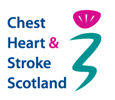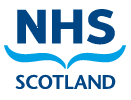Respiratory Physiotherapy
Once a patient has a diagnosis of bronchiectasis confirmed, they should see a specialist respiratory physiotherapist within 3 months to be assessed, discuss their diagnosis and start an appropriate treatment.
The choice of techniques will depend on the cause of bronchiectasis if it is known. If the airways are badly damaged, lung function, age, quantity and nature of sputum, other medical conditions, cognitive ability, adherence and understanding can be factors in treatment choices.
- Airway clearance gives the patient and physiotherapist an opportunity to discuss more about the condition and management. The frequency and duration of airway clearance technique will be tailored to the patient’s needs and lifestyle.
- Mucus clearance to keep well and free of infections is emphasised.
- Regular, twice daily physiotherapy increases mucus expectoration, improves cough, quality of life and exercise capacity in stable patients.
- Patients are more likely to adhere to a routine if their preference for a technique is discussed and agreed with their physiotherapist.
Patients who are experiencing frequent exacerbations and/or worsening symptoms should have airway clearance techniques reviewed and this should be done before considering increasing other medical therapies.
Infections may be controlled by simply helping to clear more mucus.




